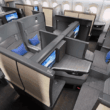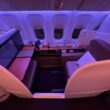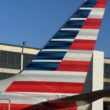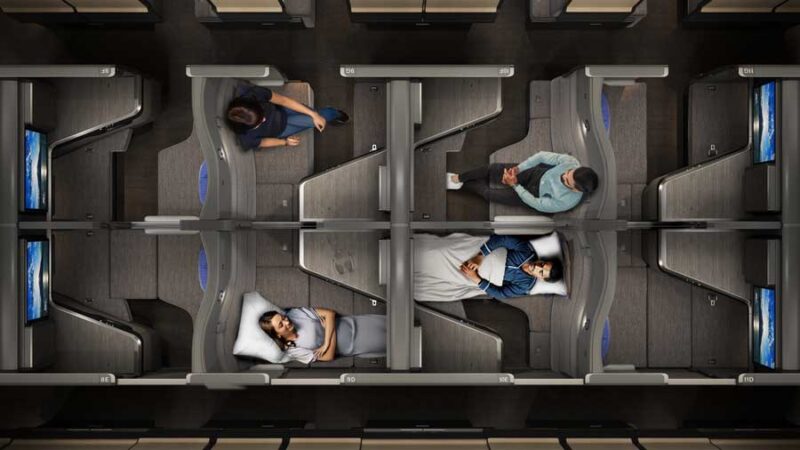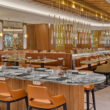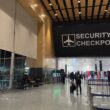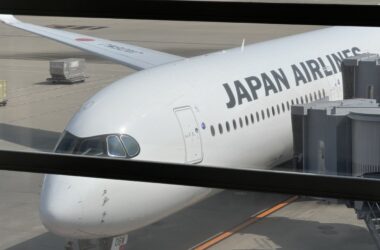A few weeks ago, ANA announced The Room FX, a new business class seat for their Boeing 787-9 fleet. These Safran seats, inspired by the current The Room business class seats on the 777, are expected to be added to the airline’s fleet in 2026.
This will also be an improvement from the current, decade-old business class seats on the 787s.
With the drive for more premium seating that we’ve seen from many airlines around the world in recent years, I thought ANA falls into an interesting position as they look to implement these new seats on their 787-9s. Internationally, we have seen a large, premium push from customers, while the overall Japanese market has diminished significantly.
First, let’s take a look at seat maps, where you’ll notice a couple things:

Above is the seat map of ANA’s most premium 787-9. They include 48 business, 21 premium economy, and 146 economy class seats.

The new 787-9 with The Room FX will include 48 business, 21 premium economy, and 137 economy class seats.
The only change the airline has made to accommodate the new business class seats is cutting one row of economy class. Otherwise, the seat map is left mostly unchanged.
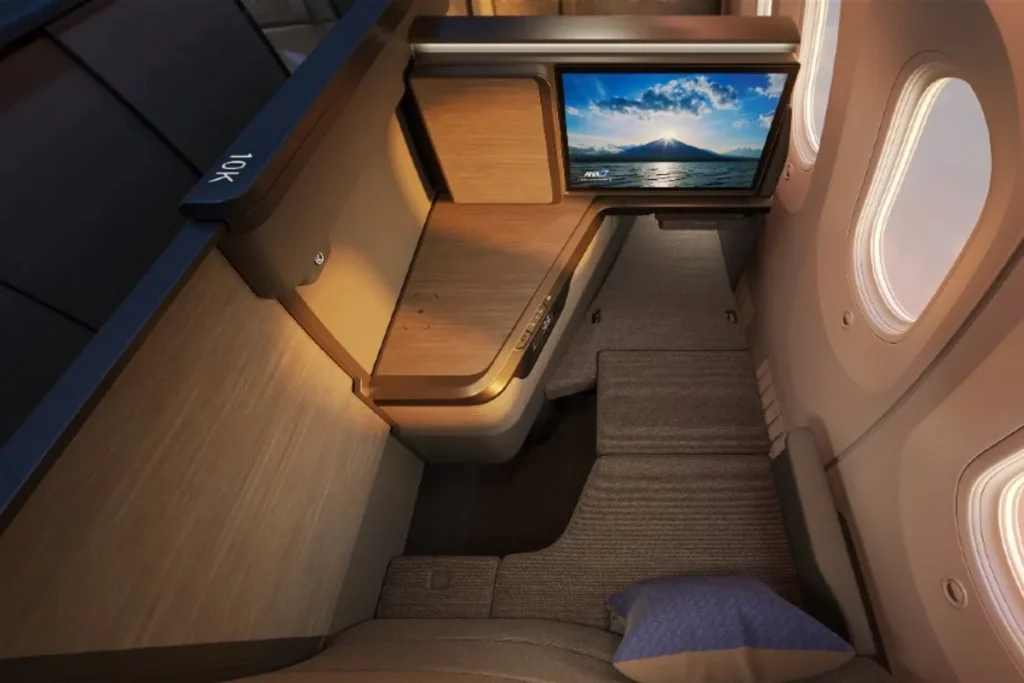
Interestingly though, The Room FX will have its forward-facing seats by the window, away from the aisle (seats A and K), and backward-facing seats by the aisle, away from the window (seats C and H). This is the opposite of the originals on the 777, where the forward-facing seats are aligned by the aisle, and backward-facing seats are aligned by the window.
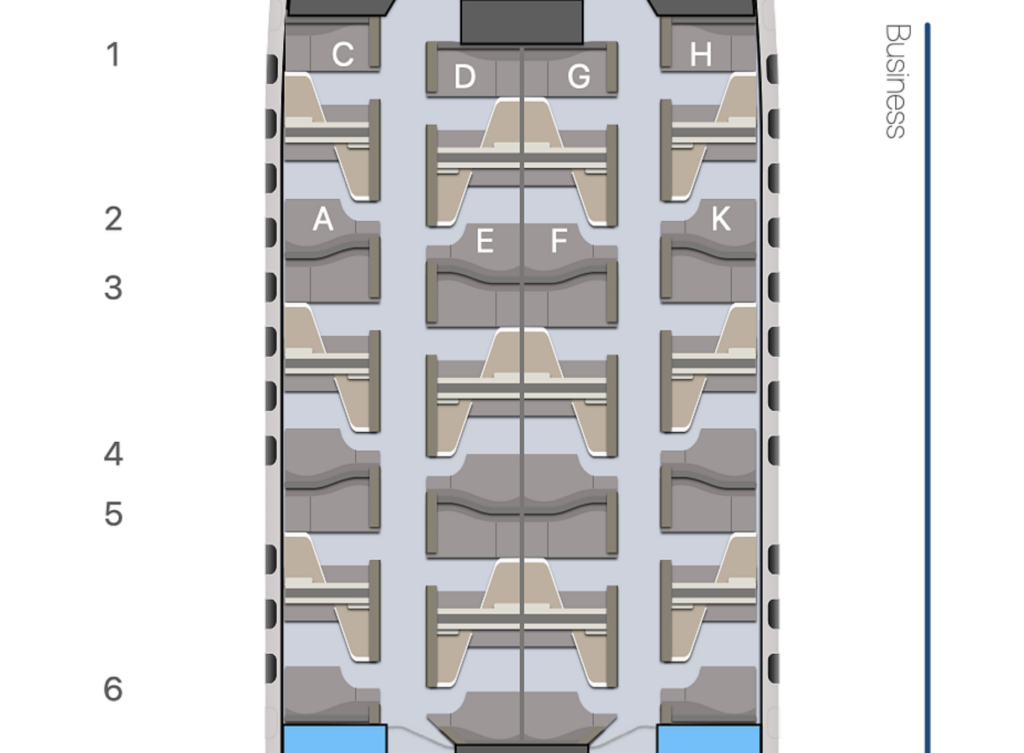
The above diagram from Aerolopa visualizes this well. Note the difference in alignment with seats A/K and C/H. Couple seats E and F are also forward-facing, while D and G are farther apart, by the aisle, and face backwards. All of this is the opposite on the 777.
I have to wonder if seats A and K would fill up faster. These seats that are forward-facing and further away from the aisle may be seen as more desirable by many. I personally do not care whether a seat is facing forward or backward, but I do realize it’s something many folks consider.
Where is ANA’s Premium Demand?
A couple of trends I’d first like to point out:
- Premium demand has been strong, and more specifically, premium leisure demand. Passengers are willing to spend more for premium economy, business, and higher products for the experience. Airlines have been eager to increase premium seating; United included a whopping 64 Polaris seats (8 of them being Polaris Studio) on their high J 787-9.
- Japan-originating demand has remained weak since the pandemic. The number of Japanese traveling overseas has hovered around a third of the number of foreign visitors entering Japan.
So, how do these two points add up for ANA?
First, it’s key to note that this configuration, although the most premium heavy on the 787, isn’t a big leap for the airline like it is for United’s new high-J configuration. The almost identical seat map should aid the airline in filling seats more efficiently.
The airline already has plenty of load factor and demand data on its existing 787-9 fleet and routes, and the airline will be able to take a simpler phase-in, phase-out approach. To put it simply, ANA will have less math and guessing to do compared to United, who introduced a brand new configuration.
ANA knows the 48 business class seats serve them well at the moment, and it’s an assuring point to see that there’s still a decent level of business travel out of Japan. In a conversation with John Walton of The Up Front during the Paris Airshow, ANA noted that outbound Japanese travel still makes up about 40% of their market in business class.
Additionally, the weak, uncertain demand from Japan could have kept them from forming a denser business class configuration, or squeezing in more seats back in economy.
Otherwise, the high premium leisure demand into Japan should be the focus for the airline.
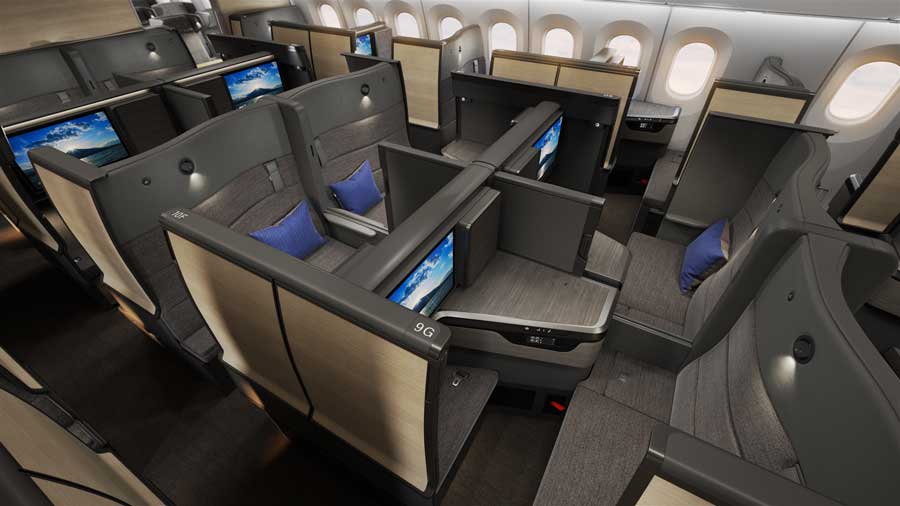
Japanese airlines also tend to be generous with aircraft seating compared to others around the world. These 48 The Room FX seats take up roughly the same amount of space as United’s high J configuration with 64 Polaris seats. ANA also maintains 33 inches of pitch in economy across its fleet.
Japan Airlines does similar, and I’d argue they take it up a notch over ANA, offering a very generous 2-4-2 configuration in their 787 economy, the only airline to do so in the world.
All in all though, I think The Room FX bodes well for ANA. In terms of the business class experience, the less dense seating could potentially pay out in terms of goodwill. The airline is in a good position to capture its existing premium demand with a very similar configuration, and I expect these new seats to be met with open arms from both its local business travelers and foreign travelers.
Featured image by All Nippon Airways.

